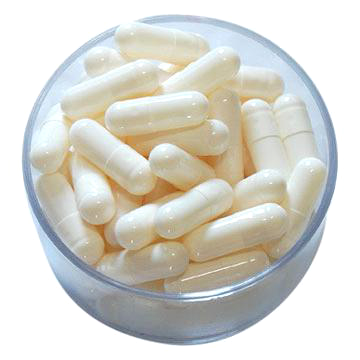Popular Articles
 GAIT StudyIn This Article
The GAIT Study was praised as a landmark trial to access the efficacy of Glucosamine and Chondroitin in the treatment of arthritis. Its results stirred up a storm. But is GAIT the end-all, be-all it is cracked to be?
What is GAIT?GAIT or Glucosamine/Chondroitin Arthritis Intervention Trial is a large-scale, placebo-controlled, multicenter clinical trial to access the efficacy of glucosamine (glucosamine hydrochloride) and chondroitin (sodium chondroitin sulfate) in the treatment of osteoarthritis. The primary GAIT study took 4 years and cost $12.5 million. It was conducted at 16 rheumatology research centers in the US and was headed by researchers from the University Of Utah School Of Medicine, sponsored by the Department of Veteran Affairs and funded by two arms of the National Health Institute (NIH), The National Center for Complementary and Alternative Medicine (NCCAM) and the National Institute of Arthritis and Musculoskeletal and Skin Diseases (NIAMS). GAIT was done to fully determine if and how glucosamine and chondroitin sulfate were effective in the management of osteoarthritis. Given that previous and smaller studies gave conflicting results, GAIT was designed to use a large study size, involve placebo control, randomize the assignment of drugs and placebo to participants and done in multiple locations. It was hoped that this full-scale trial will eliminate all bias and produce conclusive results.
The results of GAIT were first published in the New England Journal of Medicine on February 22, 2006. Besides, drawing a lot of attention, conclusions and criticism, this study also inspired two further GAIT studies. These secondary GAIT trials were shorter, involved select subsets of the study participants from the first trial and aimed at answering specific questions left out in the earlier trial. The Secondary GAIT StudiesThe first of the 2 newer GAIT studies is referred to as Ancillary GAIT Study. It took 2 years and involved the same group of researchers from the University Of Utah School Of Medicine. This ancillary study involved 9 rheumatology centers and a subset of the participants from the early study. The result was published in the October 2008 issue of Arthritis & Rheumatism. The second post-GAIT study was a continuation of the original GAIT study. Where the first study examined the ability of glucosamine and chondroitin sulfate to provide pain relief during the 6-month period of the study, this new study examined both the efficacy and safety of these supplements over a period of 2 years. It also compared the efficacy of these supplements against placebo and celecoxib. The result of this second study was published in 2010 in the Annals of Rheumatic Diseases. The Drugs of GAITGlucosamineGlucosamine is a monosaccharide that is best described as an amino sugar. It makes up the polysaccharide chain found in the chitin exoskeleton of arthropods including shellfish.
In the US, glucosamine is approved as a dietary supplement but in Europe, it is sold as a drug for managing osteoarthritis. Glucosamine is used for osteoarthritis since it is turned to glycosaminoglycans in the body. Glycosaminoglycans are some of the structural components of joint cartilage. There are three forms of glucosamine supplements. These are glucosamine hydrochloride, glucosamine sulfate and N-acetylglucosamine. Of these, only glucosamine sulfate has been shown in previous studies to be effective in the treatment of osteoarthritis. Glucosamine hydrochloride was the form of the supplement used in GAIT studies. Glucosamine is often combined with other supplements to help treat osteoarthritis. The two most common supplements combined with glucosamine in this way are chondroitin sulfate and methylsulfonylmethane or MSM. Glucosamine is a safe drug at recommended doses. Gastrointestinal side effects are the most common adverse effects observed with glucosamine. However, it may also trigger allergic reactions especially in people with shellfish allergies. Chondroitin SulfateChondroitin sulfate refers to a number of glycosaminoglycan molecules of varying lengths made out of two alternating monosaccharides (N-acetyl-D-galactosamine and D-glucuronic acid). The polysaccharide chain of chondroitin has no branches and it can have more than 100 sugars. Each of these sugars can have zero, one or two sulfate groups attached.
While it is sold as a dietary supplement in the US, chondroitin sulfate is classified as a drug in most countries including European countries. It is used in the treatment of osteoarthritis where it can help relieve pain and reduce the inflammation affecting the joints. Chondroitin is often combined with glucosamine in the management of osteoarthritis. It is a safe drug which produces a few minor side effects. CelecoxibCelecoxib is one of the new generation NSAIDs (non-steroidal anti-inflammatory drugs). It is sold by Pfizer and marketed on its strength as a selective COX-2 inhibitor (COX-2 is involved in some inflammatory responses). Celecoxib is used for treating pain caused by osteoarthritis and rheumatoid arthritis under the brand names, Celebra and Celebrex. Given the selectivity of celecoxib, it can cause serious side effects. The drug is mandated by the FDA to carry black box warnings of gastrointestinal and cardiovascular side effects. Celecoxib can increase the risk of ulcers and gastrointestinal bleeding. It can also increase the risk of heart attack and stroke. Celecoxib has a troubled history including a long-drawn, highly publicized report of its cardiovascular side effects. However, more telling is a number of fabricated efficacy studies done by Pfizer-sponsored researchers which exaggerates the efficacy of the drug. Design and Execution of GAITGAIT is an interventional study which began in April 2000 and ended in February 2004.
In this study, the standard treatment and positive control for osteoarthritis of the knee was taken to be celecoxib and the efficacies of the two supplements were to be determined against this drug and the placebo at the same time. For this study, men and women who were 40 years and older were recruited (mean age of participants was 58.3 years). The estimated total number of study participant was 1583 (36% male and 64% female). Each of the study participants must have been diagnosed with clinical osteoarthritis confirmed by radiographic imaging and show symptoms for at least 6 months prior to recruitment. The patient population was classified into 2 groups: 1229 or 78% with mild pain and 354 or 22% with moderate to severe pain. The allocation of the 5 drug choices was randomized and done according to the double blind technique to completely remove bias from the final results. The study was done in 16 rheumatology research and medical facilities situated in 13 cities across the United States. The study did the following comparisons:
The study participants received assigned treatments over a period of 24 weeks and assessments of pain were carried out at weeks 0, 4, 8, 16 and 24. They were also closely monitored for signs of adverse reactions. The GAIT study did not use a crossover technique. Therefore, each participant only used one drug choice throughout the duration of the trial. However, the participants were allowed to take acetaminophen to control their arthritic pain. Allowed dosage of acetaminophen was left to the participants to decide but a limit of 4000 mg was specified. The use of acetaminophen was disallowed 24 hours before the regular assessments of study results. The study records showed that each participant took an average of 1000 mg of acetaminophen per day.
A positive result for each drug choice in the GAIT study was defined as 20% or greater improvement in pain at the end of the study compared to the beginning of the study. Results of GAITThe presented results of the GAIT study can be divided into two summaries: the number of patients with 20% less pain and number of patients with 50% less pain after the study. For example, of the patients who reported 20% improvement in pain at the end of the study, 64% used glucosamine HCl, 65.4% took chondroitin sulfate, 66.6% took a combination of the two supplements, 70% took celecoxib and 60.1% took the placebo. Of patients who experienced 50% pain relief after treatment, 42.2% were on placebo, 46.4% took glucosamine HCl, 42.1% took chondroitin sulfate, 46.4% took a combination of the two supplements and 50% used celecoxib. The way to measure the performance of each drug choice is to compare its result with placebo. Given the above results, the researchers concluded that celecoxib produced statistically relevant pain relief above the scores of the placebo group while glucosamine, chondroitin and their combinations did not. The only patients helped by the glucosamine/chondroitin combination were those suffering from moderate to severe osteoarthritis. In fact, the combination of the two supplements produced the widest difference between placebo scores and drug scores in the entire study. 79.2% of patients on the combination experienced 20% improvement in pain relief compared to 54.3% for placebo and 69.4% for celecoxib. 52.8% of patients using the combination experienced 50% improvement in pain compared to 32.9% for placebo and 45.8% for celecoxib. However, the researchers cast doubt on the superiority of glucosamine/chondroitin over celecoxib and placebo in the treatment of moderate to severe osteoarthritis. Their rationale was that the group of patients in the study whose osteoarthritis were classified in this category represents a smaller sample size and that the result should only be considered preliminary until further studies confirm it. The 2-year ancillary GAIT study published in 2008 also reached the same conclusions that glucosamine, chondroitin and their combination were no more effective in slowing down the loss of cartilage in knee osteoarthritis. The second GAIT study published in 2010 examined the efficacy and safety of the drugs used in the first trial over a period of 2 years. It concluded that glucosamine, chondroitin and their combination produced no better result than celecoxib or placebo in the treatment of osteoarthritis of the knee. Criticisms of GAITThere are different ways to interpret the conduction, results and conclusions of the GAIT studies. Many criticisms have come up against the GAIT studies. Here are the most relevant ones. A Basic Limitation of the TrialThe GAIT studies do have their limitations. The most apparent limitation of GAIT is that it targeted only a particular form of osteoarthritis: osteoarthritis of the knee. Given that we do not fully understand how this degenerative disease progresses, it is hard to conclude that the results of the study apply to other forms of osteoarthritis. Anomalous Behavior of the Placebo GroupIn the ancillary GAIT study published in 2008, even the researchers concluded that the placebo group behaved strangely: there was a smaller loss of cartilage than can be predicted by progression of the disease. This may mean that the design of the study was flawed, that the some of the participants in the placebo group were also using other drugs or that the participants of the study were improperly recruited. Using the Wrong GlucosamineThe use of glucosamine hydrochloride for the GAIT study is questionable given that of glucosamine supplements only glucosamine sulfate has been shown to improve the symptoms of osteoarthritis. Every study on glucosamine before GAIT had concluded that glucosamine hydrochloride has none of the positive effects of glucosamine sulfate in the treatment of osteoarthritis. The Result That Got AwayThe popular reports of the results of the first GAIT study are conflicting especially with respect to the efficacy of glucosamine/chondroitin combination for moderate and severe osteoarthritis. It is impossible to explain away the fact that these supplements produced the most dramatic results of the trial (a 25% jump over placebo for improving osteoarthritic pain by 20% and a 20% jump over placebo for improving this pain by 50%) while remaining ineffective for mild osteoarthritis. The explanation that only a small study sample fell into this category is weak at best. If the sample size was too small for a conclusive result then that part of the study should not have been done at all. It would have been noteworthy to see if the researchers would have considered the result conclusive if celecoxib had produced better results for patients suffering mild to moderate osteoarthritis. A better explanation for the GAIT result is that the recruited patients with mild osteoarthritis had little room for improvement because they are experiencing the first stages of the degenerative disease. If this is the case, then it is unsurprising that glucosamine, chondroitin and their combination can only produce effects marginally better than placebo. What is surprising then is that celecoxib was recorded to produce statistically significant results for this group of patients. The Real Results of GAITAn in-depth examination of all 14 outcomes in the results of the original paper (and not the 2 selected in the New England Journal of Medicine version of the study) showed that celecoxib failed as a positive control for the GAIT study. Celecoxib did not perform better than the placebo in 12 out of the 14 outcomes measured by the study and it failed all 14 outcomes for patients with moderate to severe osteoarthritis. In contrast, glucosamine, chondroitin and especially their combination produced better results than celecoxib in 12 out of 14 outcomes measured by the GAIT study. The real result of the GAIT study would only draw the conclusion that celecoxib fared no better than placebo in the treatment of osteoarthritis. Furthermore, given the failure of the positive control, the GAIT study became flawed and its results can only be termed “inconclusive”. However, the researchers decided to put a controversial spin on a $12.5 million failure while protecting Pfizer’s celecoxib. Financial Ties to Drug CompaniesThe documentation of the GAIT studies stipulated that acetaminophen was donated by McNeil Consumer and Specialty Pharmaceuticals and that celecoxib was bought from Pfizer. What it did not show was that some of the major researchers were sponsored at one point in time by either or both drug companies. Of the 27 researchers involved in the GAIT studies, 5 have been paid at least once before to consult for McNeil, 2 were similarly contracted by Pfizer and another 2 contracted by both McNeil and Pfizer. In addition, 7 of the researchers got grants from Pfizer and 1 got from McNeil. It is not farfetched to see why celecoxib and McNeil’s acetaminophen were chosen for such a high-profile clinical trial. It is definitely possible to assume these researchers would prefer celecoxib to come out of GAIT looking better than cheaper dietary supplements outside the control of Big Pharma. In the end, the GAIT studies are not really conclusive. They do not produce the definitive answers hoped for before the trial and, while properly designed, they are not without bias. |
|||||||||||
| Next Article: How to Stop Arthritis |





 Specifically, GAIT took 6 months for each study participants and recruited only those with
Specifically, GAIT took 6 months for each study participants and recruited only those with  Glucosamine is also found in the bones and bone marrow of animals.
Glucosamine is also found in the bones and bone marrow of animals. Chondroitin sulfate is one of a group of special structural molecules called proteoglycans. It forms a part of the extracellular matrix that makes up the cartilage in the joints between bones. Therefore, chondroitin provides a cushioning protection and an elastic effect as joints are flexed during movement.
Chondroitin sulfate is one of a group of special structural molecules called proteoglycans. It forms a part of the extracellular matrix that makes up the cartilage in the joints between bones. Therefore, chondroitin provides a cushioning protection and an elastic effect as joints are flexed during movement.